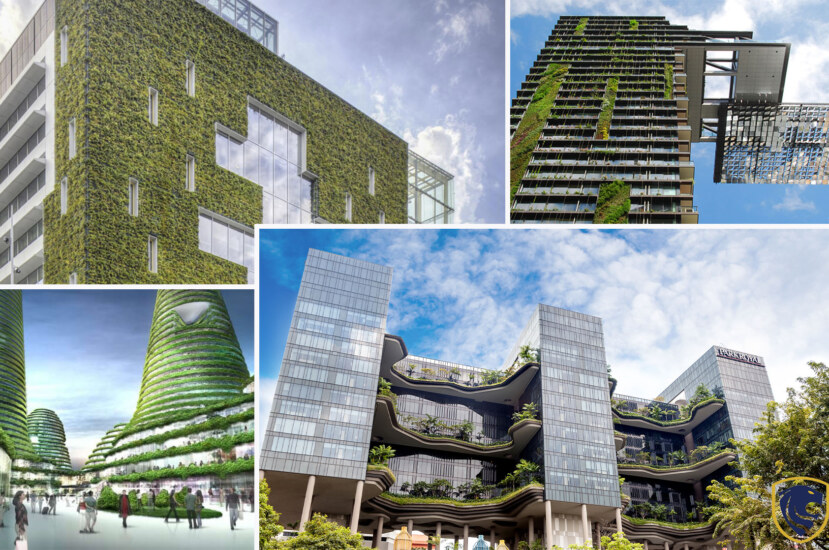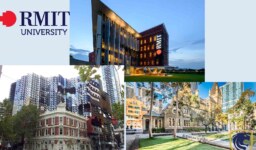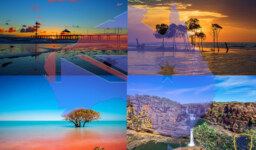One Central Park, Australia
One Central Park provided Nouvel and Blanc with a whole new-scale canvas. Here, they created a seamless experience for coexisting with the natural environment. In order to create a lush modern canopy, the public park at the center of the precinct climbs the side of the floor-to-ceiling glass-green skyscrapers. Moreover, the plant life on the façade is composed of buds and blooms from 250 different types of Australian flora and plants. Between floors, vines and lush vegetation grow, creating the ideal backdrop for Sydney’s skyline.
The 64,000 square meter park is a lovely, calm gathering place where you may unwind and relax with friends and family, similar to Central Park in New York.
You may bike through the serene woodlands. Also, you can just relax on the lawn and eat outside freely. Additionally, there are chessboards, an outdoor movie theater, sporadic markets, and music festivals.

One Central Park, Australia
The top of One Central Park is capped with a hovering cantilever. The most opulent penthouses in the skyscraper are located here. Also, a fascinating collection of motorized mirrors gathers sunlight and beams it down into the gardens of Central Park. Leading light artist Yann Kersalé uses the tower as a canvas for his LED art piece at night. This piece sculpts a shimmering explosion of movement in the sky. Moreover, this gives the One Central Park concept a fresh, starlit architectural form.
Museum of Tomorrow, Brazil
Rio de Janeiro The Museum of Tomorrow, designed by Santiago Calatrava, was named “Best Innovative Green Building” at the MIPIM Awards. Additionally, the development is the first museum in Brazil to get LEED Gold accreditation.
The museum’s environmentally friendly elements were primarily made of local materials. Moreover, they incorporate cutting-edge elements like solar panels that follow the sun’s path to absorb energy more efficiently. Aside from this, the building uses reusable rainwater collection systems. Also, their air conditioning system uses water that is pumped into the building from Guanabara Bay. The net result is a saving of 2,536,052 gallons of water and 2,400-megawatt hours (MWh) of electricity every year due to this initiative. This much energy is enough to power almost 1,200 households.

Museum of Tomorrow, Brazil
One of the sustainable elements of the Museum is water conservation. As part of the process of dehumidifying and disinfecting the air in the facility, utilizing up to 1,000 gallons of water per day. Also, the water is treated and recycled so that it can be used in the facility’s washbasins, sinks, and showers.
Burle Marx oversaw the landscape architecture, selecting local plants that require less water. As a result, of the partnership between the City of Rio de Janeiro and the Roberto Marinho Foundation, as well as Banco Santander Brasil and the BG project, The Museum of Tomorrow was opened in December 2015.
The Future of Us Pavilion, Singapore
A futuristic pavilion located within Singapore’s Gardens by the Bay, the Bayfront Pavilion is known as The Future of Us Pavilion. It is in keeping with the grand tradition of experimental constructions that evoke an interaction with nature by fusing an intricate form with a perforated skin fluidly with the surrounding environments. It provides guests with a pleasant outdoor climate. Furthermore, it offers a breathtaking visual experience similar to strolling beneath a canopy of thick tropical plants. The design, which was chosen after intensive environmental simulations and structural optimizations, follows a clear mathematical logic. In order for the construction industry to adopt comparable “green” design tools and practices in the future, material utilization was optimized and the embodied carbon footprint was reduced.

The Future of Us Pavilion, Singapore
The ecologically friendly and aesthetically pleasing sensation of dense tropical vegetation served as the inspiration for the Pavilion. Also, it uses intensive environmental simulations and structural optimization. This concept was turned into a design with a distinct mathematical logic. An ideal solution for the structural shape and pattern of the Pavilion was found through the analysis and application of the results to a thorough computational model. So, by minimizing the embodied carbon footprint and optimizing material use, the construction sector may move forward.
Bosco Verticale, Milan
The Bosco Verticale is an appeal to industrialized communities to take a new route away from unbridled expansion based on concrete, brick, and environmental devastation and toward a model that respects our earth. It is a stunning and distinctive structure.
Bosco started a new generation of sustainable structures. The Bosco Verticale was a trial project with a variety of unique features. Some of the fascinating features of this are 800 trees of various kinds. These are growing from 3 to 6 meters tall Also, some even reach 9 meters to cover the two towers.

Bosco Verticale, Milan
In addition to the trees, the buildings also feature at least 4,500 bushes and 15,000 floral plants. The placement of plant species on the sides of buildings that are most favorable for their survival and to create a unified aesthetic is done in accordance with the façade orientation.
Moreover, according to Boeri Studio, the vertical garden is a 20,000 m2 forest if it were spread out horizontally.
The studio worked closely with botanists and gardening professionals to carefully choose plants and monitor the trees’ and bushes’ growth. Also, the garden’s watering system is incredibly sophisticated and cutting-edge. The structures are to be formally inaugurated in October 2014. However, the plant cover needed to develop sufficiently over more than two years.
Australian Islamic Centre
Glenn Murcutt, one of the most well-known architects in the world, and Hakan Elevli of Elevli+ Architects collaborated on the design of the center. Both architects have an extensive body of work that is of an exceptionally high caliber. The AIC utilizes Murcutt’s design philosophy, contextualizing a structure to make sure it takes full advantage of its climatic circumstances. Moreover, the AIC fits seamlessly into the surroundings. For a Masjid to function as a place of worship, it need not have a particular aesthetic. In a non-Islamic setting, it can assume local forms. But it will never minimize any congregational reward.

Australian Islamic Centre
To link the design to the context of the industrial past, the nearby bluestone quarries, and the rich Aboriginal heritage Murcutt selected contemporary interpretations of traditional materials including rammed earth walls, exposed concrete with formwork joints and tie holes, and bluestone pavers. Also, to build an environment that is genuine to its users, Murcutt adapts his traditional design mindset.
Murcutt’s suggestion to do away with the minaret as a representation of the faith was contested by several members of the Islamic community.



